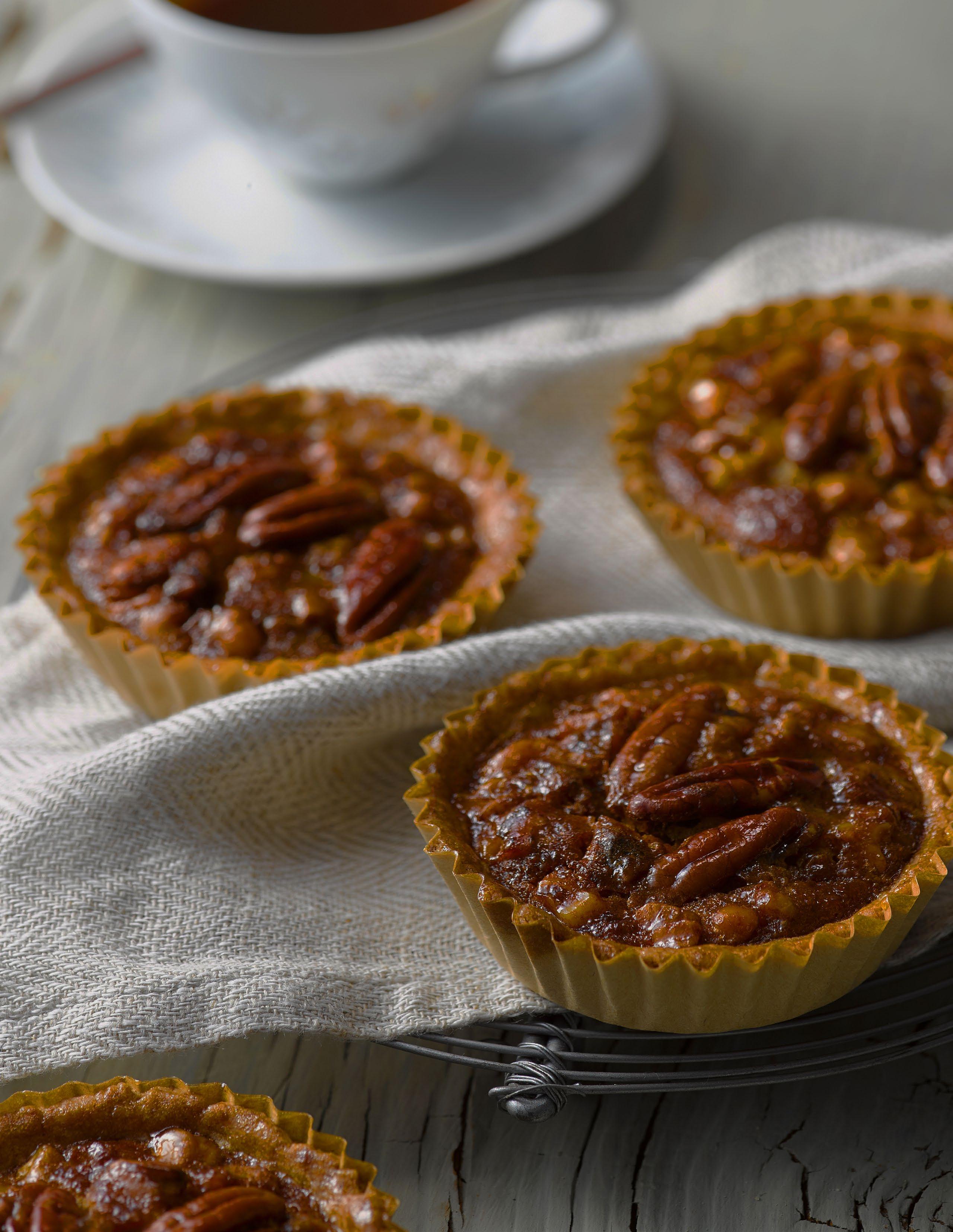
CAMPUS DINING MAGAZINE WINTER BREAK 2022 Combatting the Stigma: Shedding Light on World AIDS Day Giving back for theHolidays Celebrating Kwanzaa
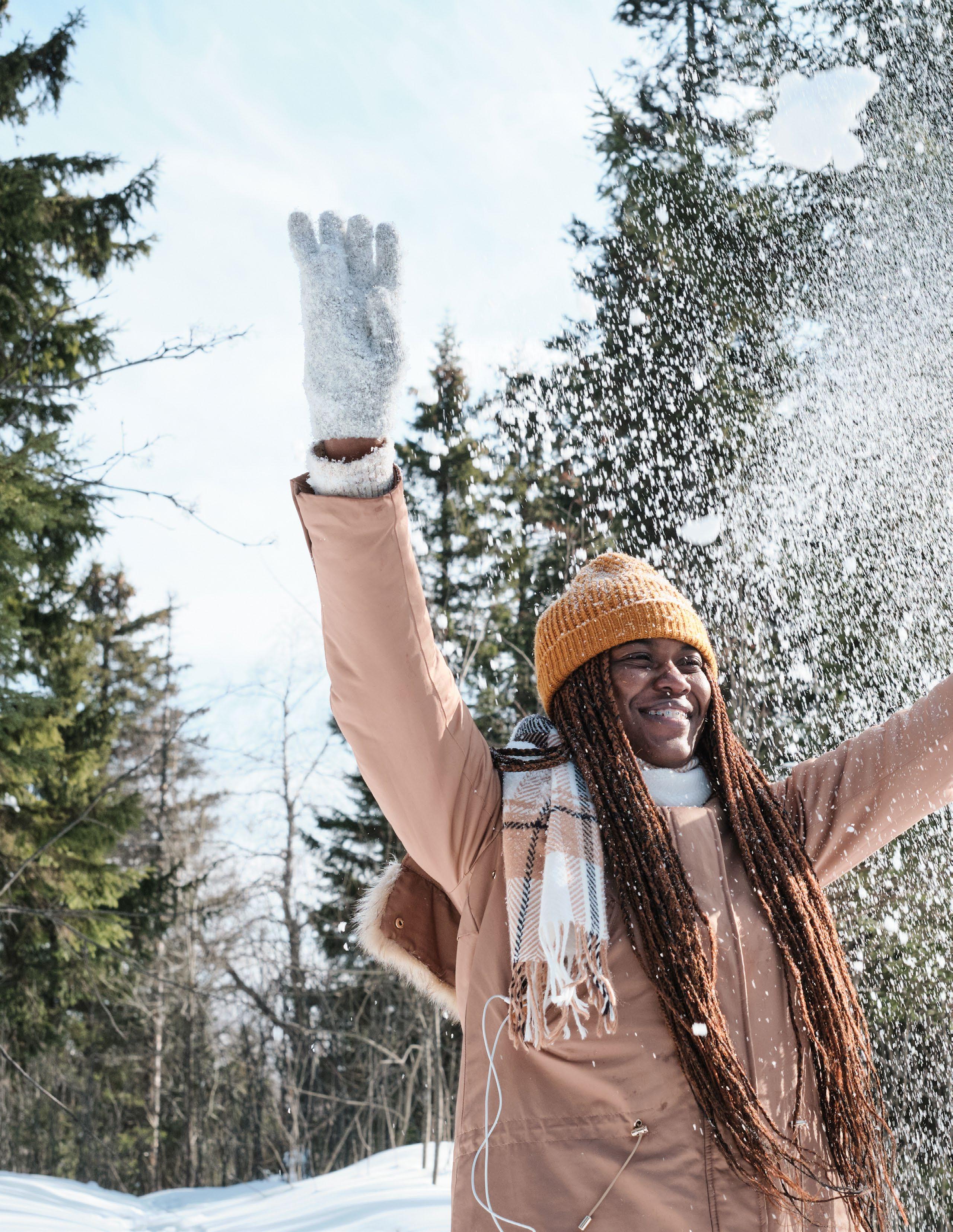
We want to thank you wholly for your continued partnership with Thompson Hospitality. It is an honor and a privilege to create and execute campus dining programming that supports the mission and goals of each institution that we serve.



We are taking our time to ensure that, together, we can finish this academic calendar year strong. As students, faculty, and staff travel home to celebrate the holidays we are taking a deep dive into all aspects of our program to guarantee that they will be even bigger and better than before. Over the break, we will be deep diving into cleanliness, safety, menu options, and residential programming.
We wish you all a wonderful holiday and can’t wait to show you what we have instore for spring!
Maurice P. Jenoure, Chief Operating Officer
Dina Zaikouk, Vice President of Operations
Together We Thrived. Together We Move Forward.
forward
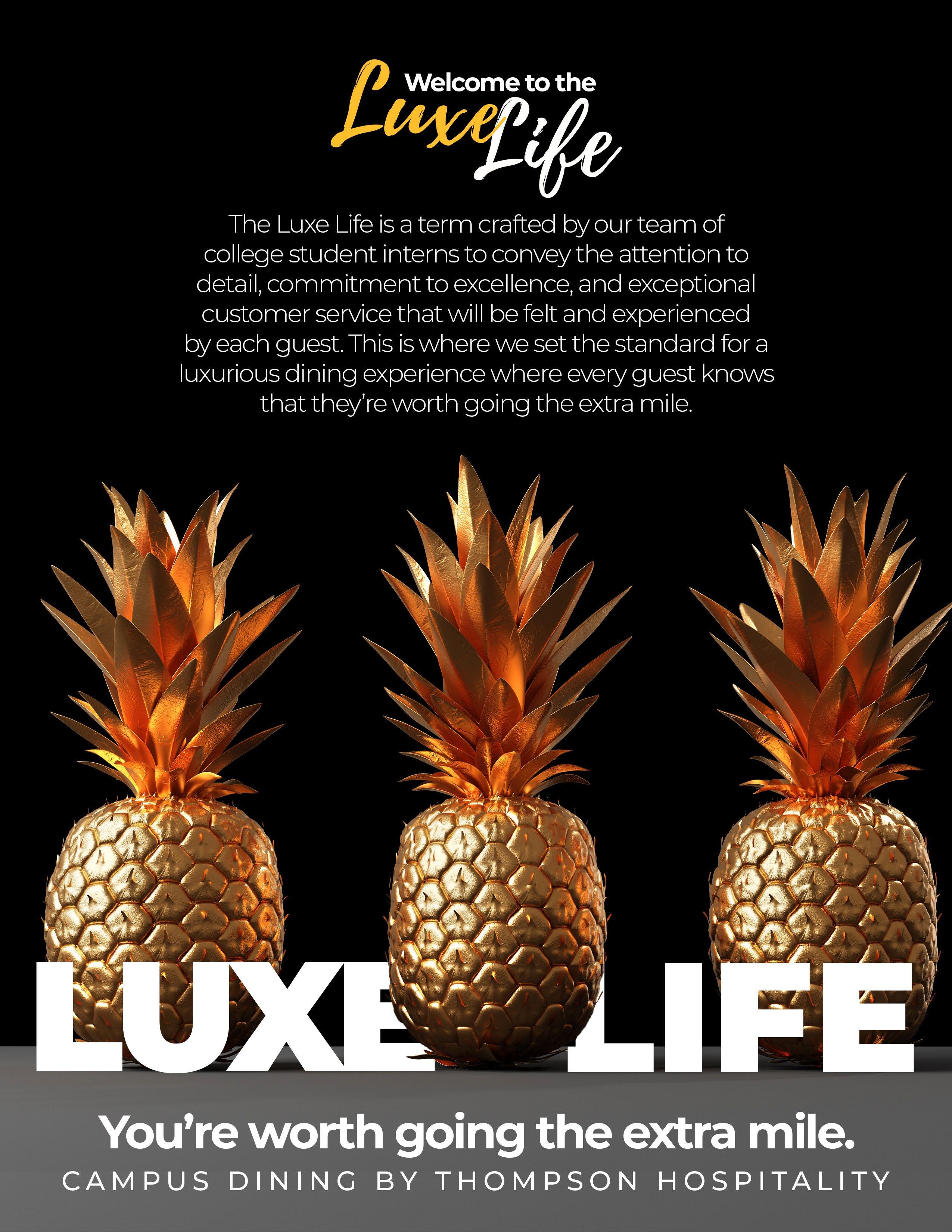

Luxe
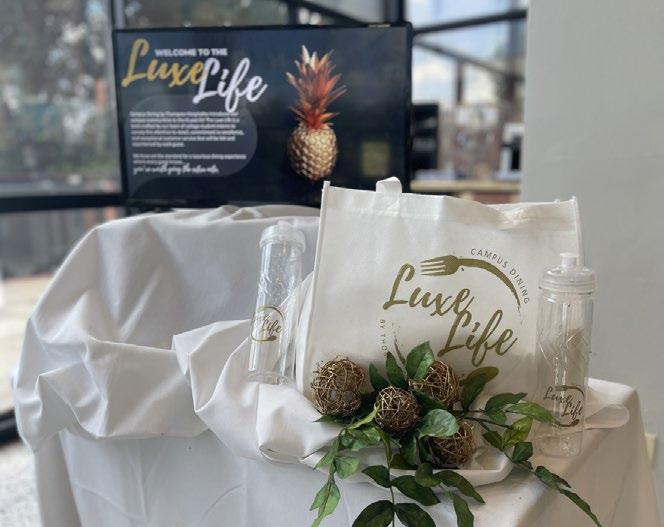
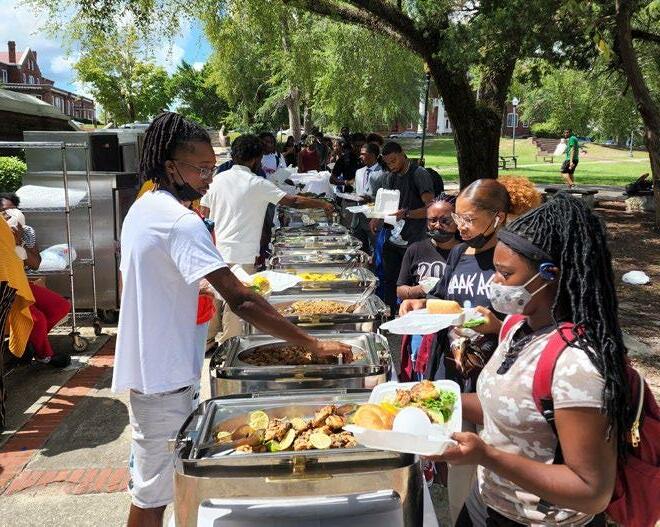
Thompson Hospitality would like to extend a huge thank you to all our staff and students for a luxurious Fall semester. We have enjoyed building deeper bonds with you through our programming and hope you all have tasted the luxurious service provided. Our goal is to show you how important it is to get the most out of your dining experience. From starting the year off in luxury with LuxeNic, bridging the gap between students and staff at the Game Night with the Directors, and celebrating comradery during the holiday season with Friendsgiving, we hope that you all are having a memorable dining experience. #MakeItMemorable We are excited to create even more memories and continue to provide you with even more exceptional service as the new year peeks around the corner. See you next semester!
#LuxeNic
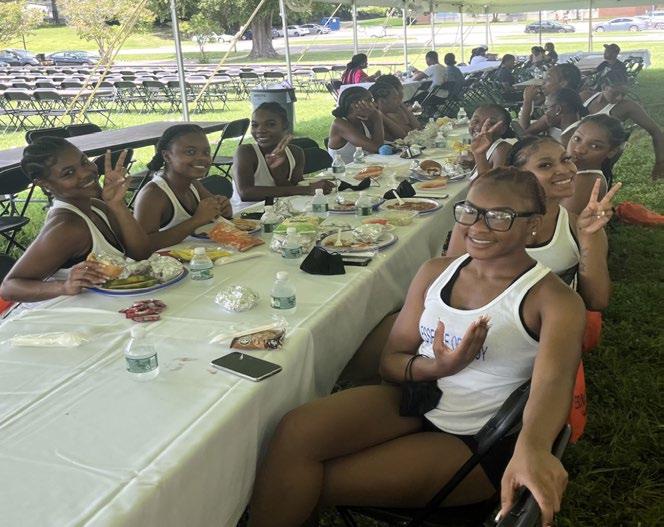

Birthday Bash
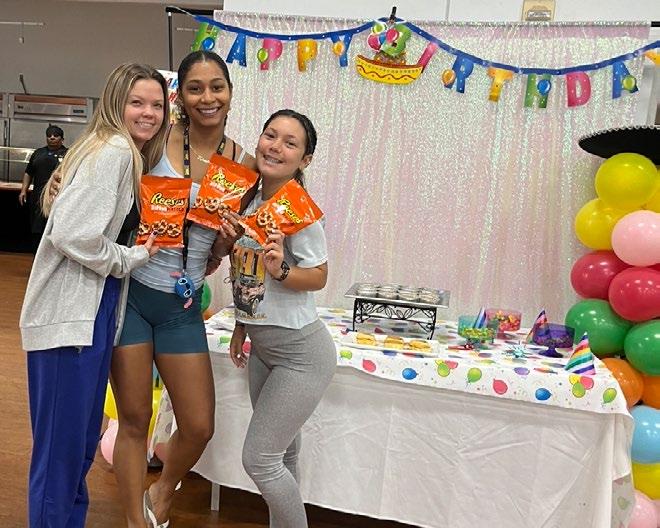

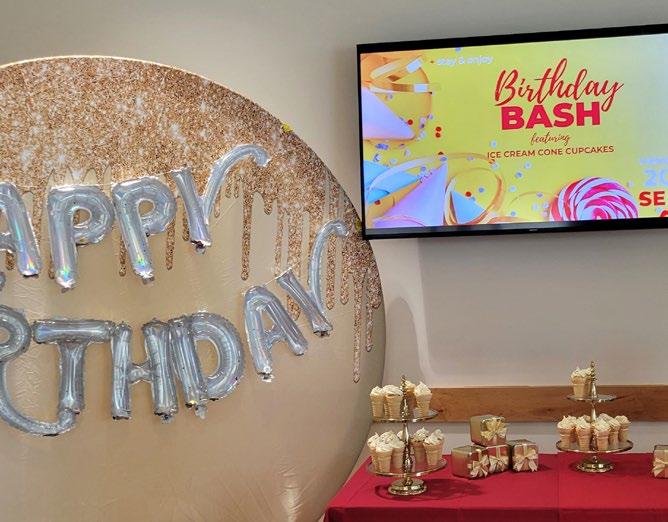
forward WINTER 6 |
Random Acts of Kindness

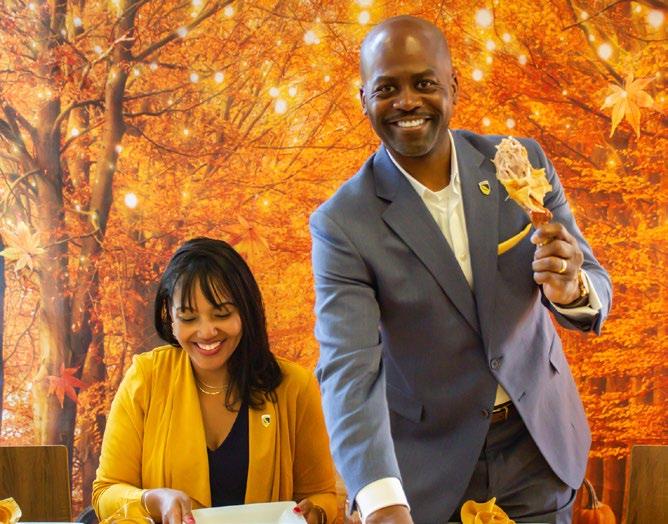
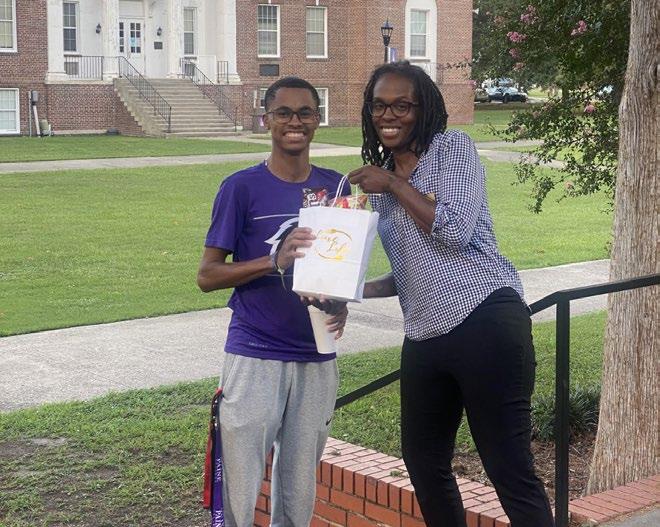

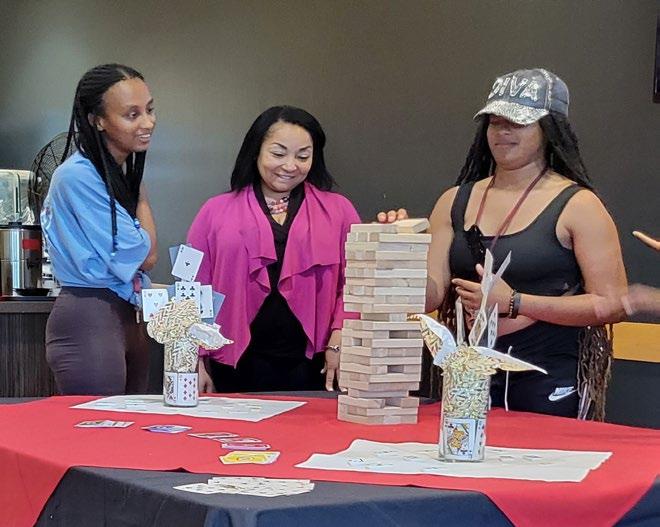
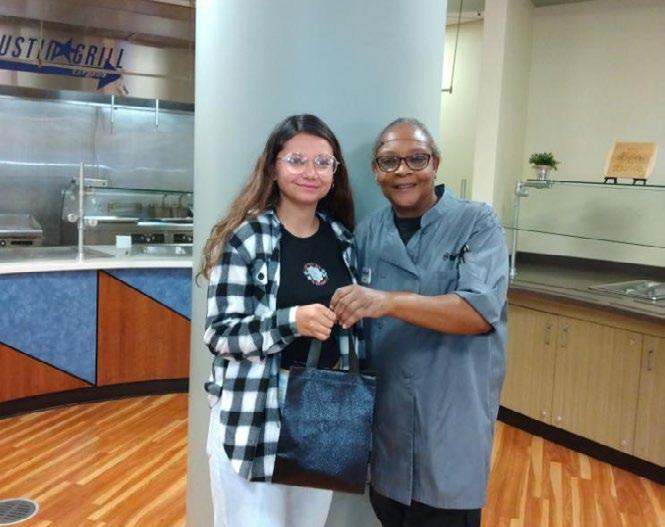
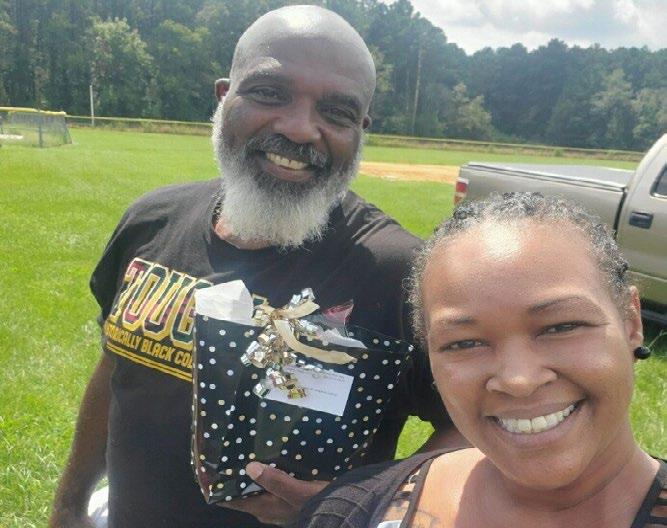
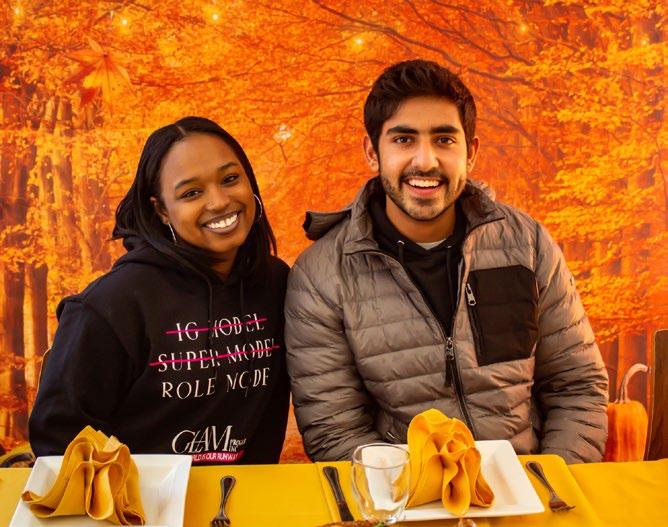
Game Night with the Directors
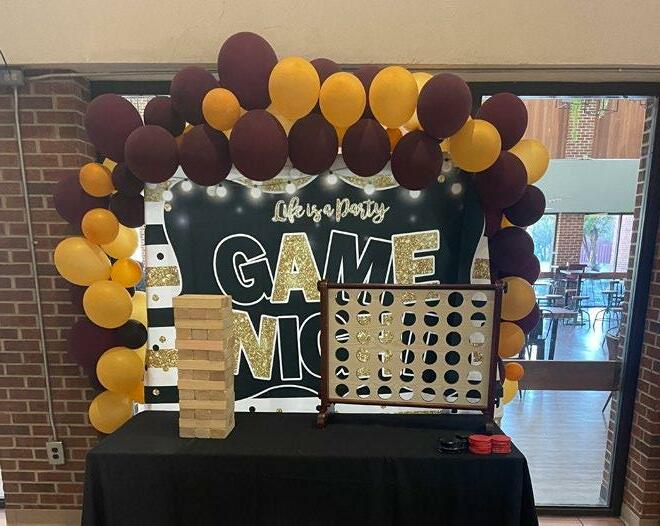
Friendsgiving
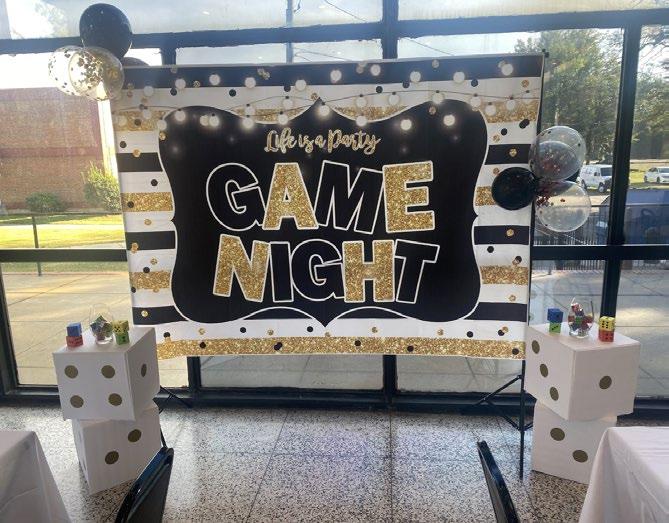
| 7 + forward magazine
Combatting the Stigma: Shedding Light on World AIDS Day

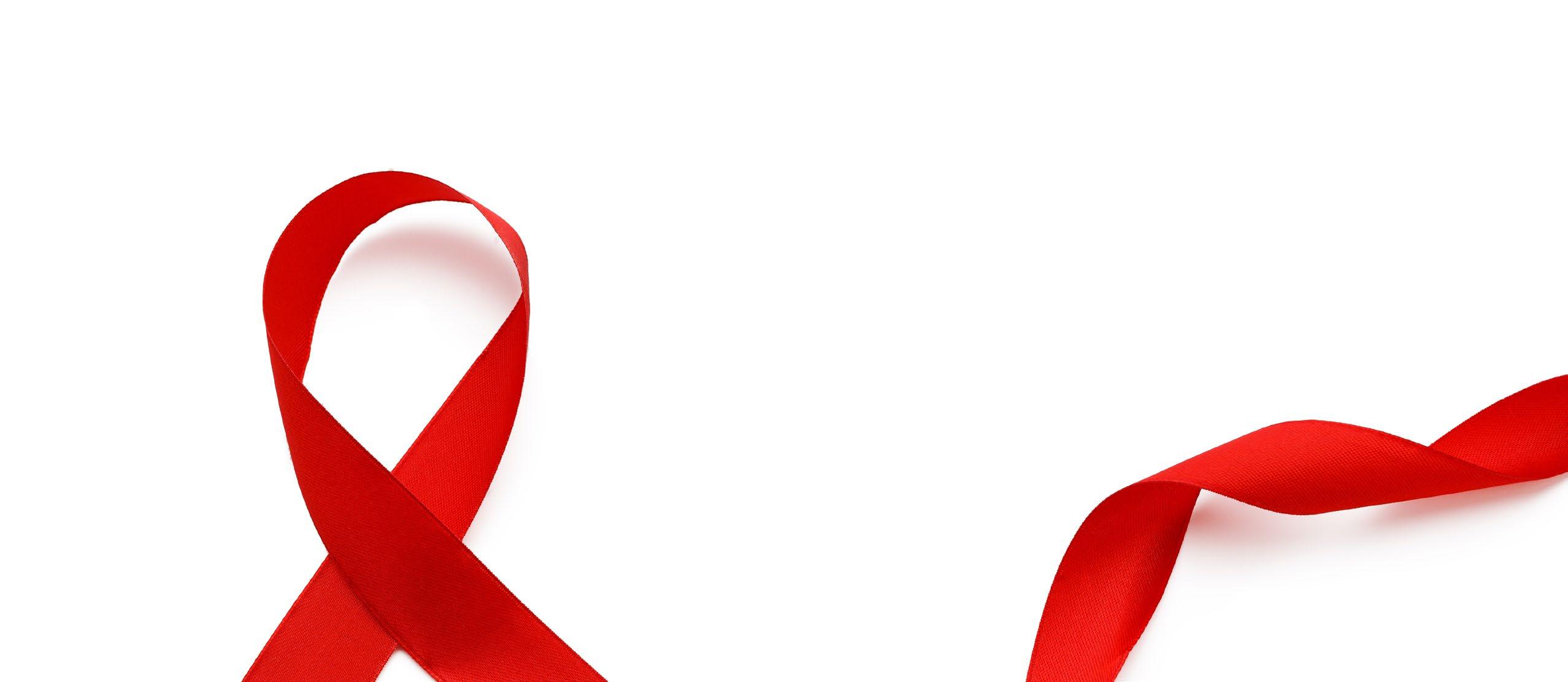
There are a lot of common misconceptions about contracting sexually transmitted diseases and infections (STDs/STIs). Many are aware of what they are but are unaware of the actual impact it can have on one’s health. The tricky thing about STDs and STIs is that some infections and diseases are asymptomatic, and others are not. HIV and AIDS are serious diseases that can live within the body without showing symptoms. Getting tested regularly and being informed about the harm HIV and AIDS can do to your body is essential.
On December 1st, World AIDS Day is celebrated. Everyone is encouraged to raise awareness and educate themselves about HIV and AIDS. It is also important to show support to people currently living with the disease and remember those who have lost their lives.
Despite significant medical strides to prevent and protect people, there are still various stigmas against the virus.
On this day, take time to read about what HIV and AIDS are to combat the false narrative that is often spread. The human immunodeficiency virus (HIV) is a virus that damages one’s immune system, making it hard for the body to fight off infections and diseases. HIV is spread by direct contact with bodily fluids such as blood, semen, vaginal secretions, and breast milk.
Contracting the virus through unprotected sex or using the same needles or syringes as an infected person is a common way that HIV is spread. HIV can also spread. from a mother to a child via birth or breastfeeding.
It is rare that the virus is contracted through an open wound touching bodily fluids, the mouth if someone has bleeding gums or sores, and blood-to-blood contact.
AIDS is often confused and used interchangeably with HIV. Though they are lumped in the same category of sexually transmitted diseases, they are not the same.
Acquired Immune Deficiency Syndrome (AIDS) is a disease that is caused by the damage that HIV does to one’s body. Someone can only have AIDS once a dangerous infection penetrates the body, or there is a meager count of blood cells. When left untreated, HIV can transform into AIDS and lead to death.
For clarification, a person with HIV will not always get AIDS and can live a very long and healthy life. If treated, HIV can become undetectable, slowing or stopping the spread of HIV to others. It is also possible that an expecting mother with HIV will not spread the disease to the unborn child if medicine is taken.
Currently, there is no cure for HIV and AIDS. However, scientists are fighting to find one. Moreover, there are many ways people with the disease can stay healthy. The virus attacks the immune system, and there can be changes to the body due to the side effects of the medication. A change in diet can help one’s overall health and how the body feels.
WebMD suggests that eating food high in antioxidants will protect the immune system. Blueberries, cranberries, strawberries, blackberries, broccoli, spinach, carrot, kale, avocados, and so much more are rich in antioxidants and help a healthy lifestyle. It is also recommended that eating lean protein options helps keep a robust immune system, and whole grains will give energy to the body.
It is recommended to get regularly tested and check in with your physician. We can keep each other safe and support the people who need it.
8 | WINTER forward




Open Our DM’s Let’s get real. How are we doing? Shoot us a DM and let us know. RE FIND US ON INSTAGRAM OR SCAN THE QR CODE IG: @thcares Find your school + forward magazine

DON’T FORGET TO CHECK OUT! THTV CLICK FOR ON DEMAND TV FOR COLLEGE DINING Happy Winter Break Good Luck on Your Final Exams Make It Memorable: How To Host Your Own Luxe Life Staycation forward WINTER 10 |


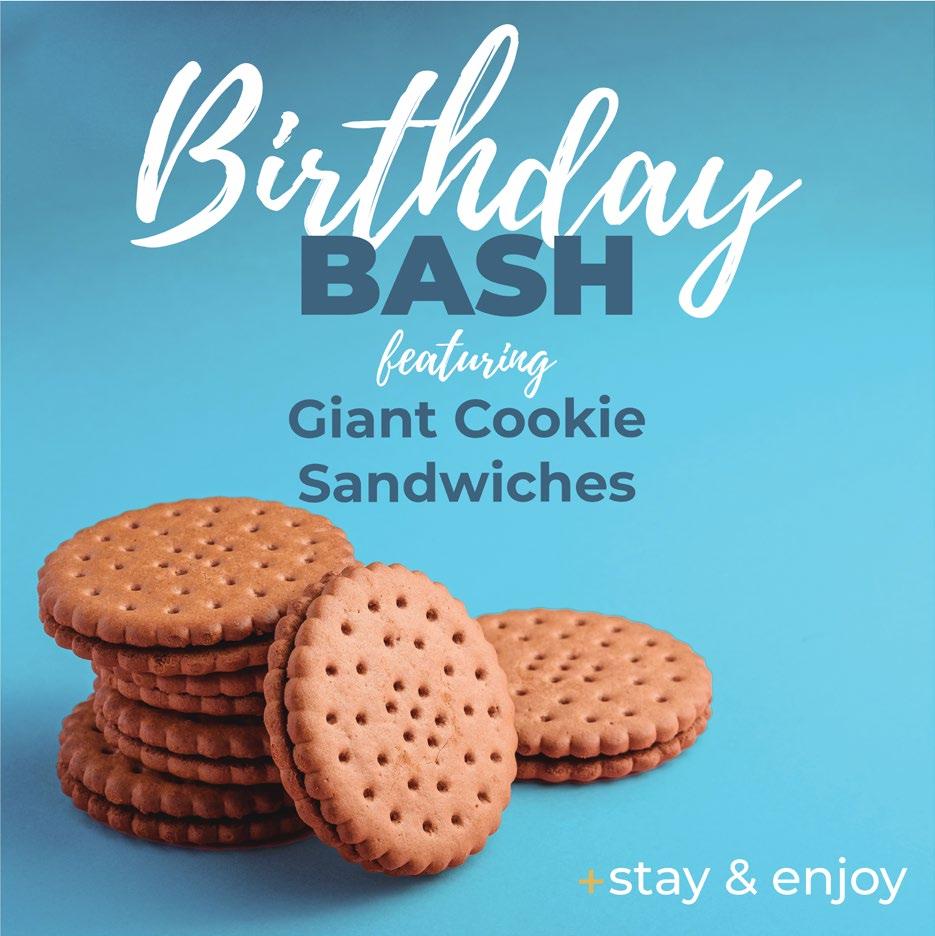
+ DEC EMBER CLICK TO SEE YOUR UPCOMING EVENTS
DINING EVENTS
Giving back for the

Tis’ the season to pay it forward and give back to those in need! Millions of people live in poverty in the United States, and many will not experience a happy holiday. This season and every one after, we at Thompson Hospitality encourage you to help those in need in any way you can.
The Congressional Research Services reported a slight rise in the United States poverty rate from 10.5 percent
in 2019 to 11.4 percent in 2020. Since then, the poverty rate skyrocketed to 14.7 percent in February 2022. With the rising poverty rate, people need help more than ever.


The pandemic is one of the reasons the poverty rate has continuously grown over the last two years. Many people lost their jobs and homes, making it hard for people to care for their loved ones properly.
During the holiday season, as the weather turns cold and money turns scarce, many organizations aim to help those in need throughout their difficult time. Most college students do not know where and how to get involved. Here are some places to get you started. Each is always looking for volunteers and donations this holiday season.
Moveable Feast- Baltimore MD
Moveable Feast is a non-profit organization founded in Baltimore, Maryland. Its mission is to improve the health of state residents who are dealing with the effects of food insecurities and people living with chronic illnesses. The organization prepares and delivers medically tailored meals, all while providing nutritional education. They offer volunteer opportunities for the community to come out and help provide food. Volunteer opportunities can be found on their website and are available Monday-Fridays in the Baltimore area. www.mfeast.org/volunteer
Project Linus


Project Linus is a non-profit organization that provides handmade blankets to children throughout the United States. Named after the famous Charlie Brown character, Linus, who always carried his signature blanket, this organization has delivered over eight million blankets since 1995. The organization has grown and can be found in all 50 states. Donations are always welcomed. Anyone can volunteer by contacting a chapter in their state. www.projectlinus.orgchapters
Toys for Tots
Toys for Tots is a program created by the Marine Corps to provide toys to less fortunate children for Christmas. Founded in 1991, the organization gained nationwide support from the local community and celebrities. To participate, you can donate to the national movement by finding a local campaign in your state. www.toysfortots.org/request_toys
Ronald McDonald House
The Ronald McDonald House charity was founded in 1974 and aims to create and support programs that help improve the well-being of children. The organization can be found worldwide with over 600 programs and over 100,000 volunteers. There are endless opportunities for how to lend a helping hand, including hosting a fundraiser, fulfilling a wish list, and finding an ongoing program to volunteer at www.rmhc.org/get-involved
Meals on Wheels
Meals on Wheels is a non-profit organization that prepares and delivers food to senior citizens in their homes. Many of their recipients live alone and barely interact with their families. When a volunteer stops by and drops off their meal, it brings them immense joy. Meals on Wheels have locations all over the country and are always looking for more volunteers.
www.mealsonwheelsamerica.org/americaletsdolunch
+ forward magazine | 13
Celebrating: Kwanzaa
Even in the darkest hours, there has always been a beacon of light to give hope to a community. Kwanzaa became that light, and today many African Americans close the season with a holiday to bring them joy and peace.
Activist and Black studies professor at California State University, Maulana Karenga, created Kwanzaa to bring joy, unity, and community to African Americans during the 1960s.
The civil rights movement had defined the 1960s as Black people all over the United States fighting for their freedom. Racial segregation was still legal, and every day African American demonstrators and allies of other races participated in marches and sit-ins to protest unequal treatment.
Following the Civil Rights Act of 1964 and the Voting Rights Act of 1965, Black people saw a glimpse of hope where there was none. However, the laws did not stop the discrimination that black people were facing, nor did they improve the conditions of the poverty-stricken neighborhoods that were disproportionately inhabited by minorities.

In 1965, a riot broke out in a predominantly Black neighborhood that stemmed from a dispute between police officers and Watts, Los Angeles residents. In the end, there were 34 deaths, over 1,000 injuries, and hundreds of buildings destroyed. Karenga was devastated by what had occurred and wanted to bring peace to the neighborhood and African Americans nationwide.
The following year, 1966, Karenga created Kwanzaa to instill a sense of community and purpose within African Americans to help them understand what it means to
uplift and empower one another.
The word Kwanzaa is a Swahili word that means “first fruits.” All of the terms connected to the holiday are Swahili, and the traditions of Kwanzaa directly come from traditional West and Southeast African culture.
Kwanzaa takes place over seven days (December 26thJanuary 1st), where each day highlights one of the seven principles of that holiday. At the end of each day, one of the seven candles is lit, and the designated principles are discussed with loved ones.
The seven principles of Kwanzaa are unity, selfdetermination, collective work and responsibility, cooperative economics, purpose, creativity, and faith. Throughout the week, people are to incorporate different activities that connect to the meaning of the holiday.
The seven candles are placed in a Kinara; a candle holder is used to celebrate Kwanzaa, representing the original stalk from which African Americans came: their ancestors. A Kinara has seven branches to fit each candle separately and is placed as a centerpiece.
Traditionally on the sixth day of Kwanzaa, a feast is thrown where the sixth principle, creativity, is discussed with your loved ones.
On the final day of Kwanzaa, gifts are exchanged. Gifts are symbolic to the person and have an educational or artistic nature.
Kwanzaa is not a religious holiday but a cultural one that African Americans celebrate across the diaspora. Over time, several variations have developed based on what works for families. This holiday season, reflect on the seven principles of Kwanzaa. You never know what you might learn.
+DECEMBER 14 |
Kwanzaa Word bank
Kwanzaa- First fruits
Kinara- a candle holder Mishumaa Saba- the seven candles
Pan- African Flag
Mkeka- a mat Muhindi- corn to represent the children
A flag created in 1920 to symbolize black liberation in the United States. There are three flag colors; red to represent the struggle, black to represent the people, and green to define the future. The flag is used for decoration.
Umoja (Unity)
The first principle of Kwanzaa that highlights striving for and maintaining harmony in the family, community, nation, and race.
Kujichagulia (Self-Determination)

The second principle of Kwanzaa encourages us to name ourselves, create for ourselves, and speak for ourselves.
Ujima (Collective Work and Responsibility)
The third principle is to build and maintain the community together as well as make the community’s problem our problems in order to solve them
Mazao- fruit to represent the harvest
Zawadi- gifts
Ujamaa (Cooperative Economics)
The fourth principle encourages people to build and maintain their businesses to profit from them together.
Nia (Purpose)
The fifth principle is to make the collective mission to build and develop the community to restore the people to their traditional greatness.
Kuumba (Creativity)
The sixth principle is always to do as much as possible to leave our community more beautiful than inherited.
Imani (Faith)
The seventh principle is to believe with all our hearts in our people, the righteousness, and the victory of our struggle.

16 | +DECEMBER click to see your upcoming events

+ forward magazine | 17

Marketing Contacts Daniela‑Gabrielle Smallwood, Head of Marketing and Communications daniela.smallwood@thompsonhospitality.com (571) 444–7430 Cindy Horstman, Field Marketing Director chorstman@thompsonhospitality.com (804) 640–4136 Editorial Staff Gina Godwin, Creative Director Heaven Smallwood, Chief Editor DeAndre Taylor, Graphic Designer Yolanda Waters, Lead Writer












































